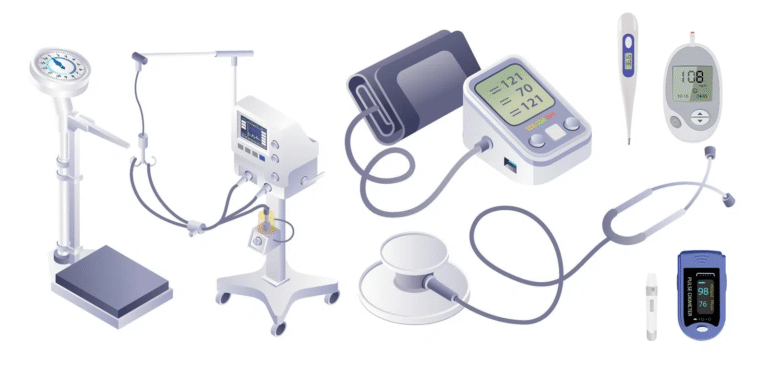How Do Medical Products Improve Patient Care? (Explained Simply)
In today’s world, healthcare is evolving rapidly. One major reason for this transformation is the improvement and innovation in medical products. From simple bandages to high-tech machines, medical products are playing a powerful role in making healthcare better, faster, and safer.
But how exactly do they improve patient care? Let’s explore in simple terms.
What Are Medical Products?
Before diving deep, let’s first understand what “medical products” mean.
Medical products are tools, equipment, devices, and supplies used in the diagnosis, treatment, monitoring, or prevention of diseases. Some examples include:
- Thermometers
- Blood pressure monitors
- Insulin pens
- Pacemakers
- MRI machines
- Surgical instruments
- Artificial joints
They can be as simple as a wheelchair or as advanced as a robotic surgery system. These products are created not only to treat illnesses but also to enhance comfort, accuracy, and quality of care.
1. Faster and Accurate Diagnosis
One of the biggest ways medical products improve patient care is by helping doctors diagnose problems early and accurately.
Example:
An MRI machine can detect tiny tumors that would be missed by older tools. Blood glucose monitors allow diabetic patients to check their sugar levels at home within seconds.
How This Helps:
- Patients get diagnosed sooner.
- Treatment can begin faster.
- The chances of successful recovery increase.
2. Better Treatment Options
Modern medical products provide more effective treatment. Whether it’s a new drug delivery system or an advanced surgical tool, the results are often quicker, less painful, and more precise.
Example:
A laparoscopic surgical kit allows surgeons to operate with tiny cuts, reducing pain and speeding up recovery.
How This Helps:
- Less pain and discomfort for the patient
- Shorter hospital stays
- Fewer side effects
3. Improved Patient Monitoring
Many medical products are designed to keep an eye on a patient’s condition even after treatment begins. This is especially helpful for chronic diseases like heart issues, diabetes, or asthma.
Example:
Wearable heart monitors track heart rhythms and send alerts if something goes wrong.
How This Helps:
- Early warning of complications
- Better control over chronic conditions
- Peace of mind for patients and families
4. Enhanced Patient Safety
Medical products are also used to prevent errors and keep patients safe during treatment. Tools like barcode scanners for medicines help ensure patients get the right drug in the correct dose.
Example:
Smart infusion pumps prevent medication overdoses by automatically adjusting the flow rate based on the patient’s weight and need.
How This Helps:
- Reduces the chance of mistakes
- Builds trust between patient and provider
- Increases success rates of treatments
5. Support for Independent Living
Some medical products are designed to help people live a more independent and active life, even with health problems. They promote dignity, confidence, and self-reliance.
Example:
- Hearing aids
- Prosthetic limbs
- Home dialysis machines
How This Helps:
- Patients can stay at home instead of in hospitals
- Less dependence on caregivers
- Better mental and emotional health
6. Better Communication and Record-Keeping
Digital medical products like Electronic Health Records (EHRs) and patient portals help doctors and nurses share and access important health data quickly.
Example:
A doctor in one city can instantly see the test results of a patient from another hospital without delay.
How This Helps:
- Faster decision-making
- Fewer repeated tests
- More coordinated care between providers
7. Cost-Effective Solutions
Many modern medical products are designed to reduce overall healthcare costs by preventing complications, reducing hospital stays, and avoiding unnecessary procedures.
Example:
Home blood pressure monitors help control hypertension before it leads to expensive ER visits.
How This Helps:
- Saves money for both patients and hospitals
- Focuses on prevention rather than emergency care
- Improves long-term health outcomes
8. Customized and Personalized Care
Thanks to medical products like genetic testing kits and wearable trackers, care can now be tailored to the specific needs of each patient.
Example:
A cancer treatment plan based on a patient’s genes leads to better results and fewer side effects.
How This Helps:
- More targeted and effective treatments
- Fewer complications
- Faster recovery
Summary Table: Benefits of Medical Products in Patient Care
| Benefit | Description | Real-Life Impact |
| Faster Diagnosis | Quick and accurate identification of issues | Early treatment, better outcomes |
| Better Treatment | Advanced tools and techniques | Less pain, faster recovery |
| Continuous Monitoring | Devices that track health in real-time | Better control, fewer emergencies |
| Patient Safety | Tools that prevent errors | Increased trust and safety |
| Independent Living | Assistive devices for daily life | More dignity and freedom |
| Improved Communication | Electronic records and data sharing | Seamless coordination among doctors |
| Cost Savings | Tools that prevent costly complications | Affordable care |
| Personalized Medicine | Products tailored to individual needs | Precise and effective treatment |
5 FAQs About Medical Products and Patient Care
Q1: Are medical products only used in hospitals?
A: No, many medical products are used at home, clinics, and even on the go. Devices like inhalers, thermometers, and glucose meters are made for personal use.
Q2: Do medical products reduce the need for doctors?
A: Not at all. Medical products support doctors and nurses, making their work easier and more accurate. They don’t replace healthcare professionals but help them provide better care.
Q3: Are all medical products expensive?
A: Not necessarily. While some products like MRI machines are costly, others like digital thermometers or portable BP monitors are very affordable. Many health insurance plans also cover essential medical equipment.
Q4: How are medical products tested for safety?
A: Medical products go through strict testing and approval by authorities like the FDA (Food and Drug Administration) or similar agencies. This ensures they are safe, effective, and high-quality.
Q5: Can technology in medical products fail?
A: Like any device, medical products can sometimes fail. That’s why regular maintenance, updates, and professional training are important. Still, most products today are highly reliable and built with safety features.
Final Thoughts
Medical products have revolutionized patient care. From speeding up diagnosis to enabling at-home treatments, these tools are reshaping how healthcare works. They make life easier not only for doctors and nurses but, most importantly, for the patients themselves.
As technology keeps advancing, we can expect even more powerful, personalized, and accessible medical products in the near future—bringing us closer to a healthier world for all.



